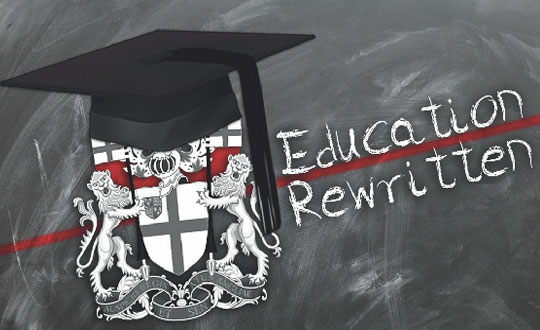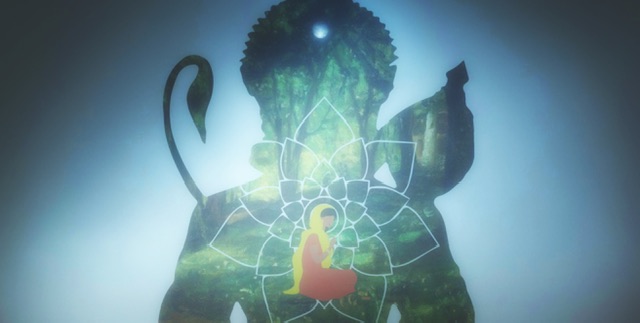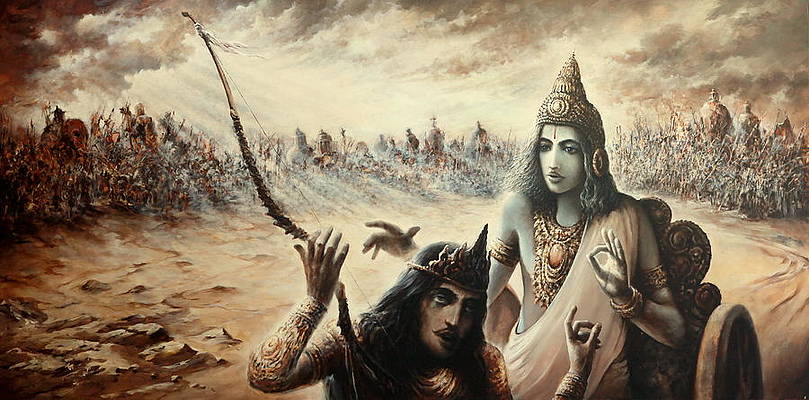All those who’ve been educated in schools propagating western-style education, do you remember what you were taught? Has it opened doorways of the higher dimension for you?
Most of you would have forgotten the education. This is the difference between a western-style school education and the gyan of the Vedas.
The teachings of the Vedas are applicable to every aspect of life.
The Vedas say,
Sa vidya ya vimuktaye
In other words, ‘that it is gyan which liberates us’.
Our ancients put gyan on the highest pedestal as a tool to prepare a being for the journey called life, so that he/she may realise his/her true potential at the culmination of this journey of experience.
Debunking some popular myths about Education in India prior to British rule
In his work, The Beautiful Tree, Dharampal cites quotes from imperial rulers to establish the quality and quantity of indigenous education. There was a school in every village, and all groups enjoyed the benefits of gurukul-style education that created citizens, not drones.
Myth 1
Education was limited to the upper-castes
Sir Thomas Munro, Governor of Madras, ordered a survey in June 1822, to ascertain the caste-wise division of students in four categories, viz. Brahmins, Vaishyas, Shudras and other castes. While the percentages of the different castes varied in each district, the results indicated impressive presence of the so-called lower castes in the school system.
Myth 2
India was backward educationally or economically when the British entered
According to Christian missionary William Adam’s report on indigenous education in Bengal and Bihar in 1835 and 1838, there were 100,000 schools in Bengal, one school for about 500 boys; that the indigenous medical system that included inoculation against small-pox. Sir Thomas Munroe’s report to the Governor at about the same time proves similar statistics about schools in Madras. As per Dharampal’s estimates, the literacy rate in India before the British was higher than that in England.
On the contrary, if one goes by public records, British had no tradition of education or scholarship or philosophy from 16th to early 18th century, despite Shakespeare, Bacon, Milton, Newton, etc. Till then education and scholarship in the UK was limited to select elite. Alexander Walker’s note on Indian education establishes that it was the monitorial system of education borrowed from India that helped Britain to improve, in later years, their school attendance which was just 40,000, yes just that, in 1792.
Myth 3
The Science of Surgery has emanated from the West
The science of surgery was given by Sushrut, who is believed to have been taught by the doctor of the Gods, Dhanvantari. He practiced on the Ghats of Ganga in Benaras. Sushruta, who is recognised for his innovative method of rhinoplasty, extracapsular lens extraction in cataract, anal and dental surgeries, would sit by the shore of Ganges at night, and wait for the corpses (which were offered to the river) to flow downstream. He would then make his students practice on those corpses the technique of surgery and surgical implants. He made 148 kinds of instruments, these instruments resembled animals, and till date all modern surgical instruments are based on his tools. His methods were popularised in Middle East by Iranians as Yunani Medicine. It is speculated that in India, Sushrutas legacy was passed down the community of potters. From one such potter, young English Surgeon JC Carpue caught on to the idea of a nose replacement, and taught the rest of the world the art of Plastic Surgery. An illustrated account of this surgery, where a flap of skin from the forehead was used to construct the nose, was reproduced in the October 1794 Issue of The Gentleman’s Magazine of London.
In October 1931 Gandhi made a statement at Chatham House, London that created a furor in the English press. “Today India is more illiterate than it was fifty or a hundred years ago, and so is Burma, because the British administrators, when they came to India, instead of taking hold of things as they were, began to root them out. They scratched the soil and left the root exposed and the beautiful tree perished.” It was, in fact, true.
British’s Gift to India – Breaking our backbone, our Culture through the change in Education
India has since ancient times laid great emphasis on education. That’s why we had universities like Nalanda, Taxila, Mithila, Vikramasila etc. but here is what the British did…
British tried to educate the Indians. They found the Indians uncultured and uncivilized and thought of uplifting them. The means to educate was through English Language and Literature.
The controversy began with the Charter Act 1813 which had asked the East India Company to spend some amount on the education of Indians. The major issues which were raised regarding the usage of money for this education were – the class to which the education would be imparted; the language(s) that should be imparted; and the body which would be responsible to carry out this task. The difference in ideologies regarding the language to be taught created two groups, namely the Orientalists and the Anglicists. The Orientalists advocated the study of indigenous literature through vernacular languages. They gave importance to Sanskrit and Arabic languages and thought that Indian culture can only be preserved in these. However, the Anglicists emphasized that English was a better language and literature to be taught.
Amidst this controversy, Lord Macaulay gave his historical ‘Minute’ in 1835. Macaulay related the education system with the benefit of trade and easy communication with the natives. According to him the minds could be only colonized with the Indian roots shaken. So he tried to uproot the Indian culture through English education. He advocated education for a selected class and wanted to create eminent clerks to serve the lower cadres in British administration. This ‘Minute’ passed by William Bentinck swept off the Indian system of education. It only aimed at producing “Brown Englishmen” with English thoughts and opinions. It was for the benefit of the British governance that the clerks learnt English language and English literature.
The education system of the British which started as a movement of learning became a means of dominance, a means of colonization. Essentially, the British education almost killed the nationalist feeling, it wiped off the faith of Indians in their own culture; it even did away with the belief in the Indian classical and vernacular languages and changed the basic philosophy of life of the Indian people against the Indian temperament.
Some Great Scholars on this Colonial ‘Legacy’ of ours
Mr. Ermest Havell (formerly Principal of the Calcutta School of Art) has rightly said, the fault of the Anglo-Indian Educational System is that, instead of harmonizing with, and supplementing, national culture, it is antagonist to, and destructive, of it.
Sir George Birdwood says of the system that it, “has destroyed in Indians the love of their own literature, the quickening soul of the people, and their delight in their own arts, and worst of all their repose in their own traditional and national religion, has disgusted them with their own homes, their parents, and their sisters, their very wives, and brought discontent into every family so far as its baneful influences have reached.” (Source: Bharata Shakti: Collection of Addresses on Indian Culture – By Sir John Woodroffe p 75-77)
Need of the Hour: Know Your Roots, minus Imperialist Adulteration
The Indian people ought to know whether they have a history of worshiping poverty as the colonialists had made their elites believe or do they have a tradition of building prosperity.
As Max Mueller, the propagator of the Aryan invasion theory, wrote to his wife, “It took only 200 years for us to Christianise the whole of Africa, but even after 400 years India eludes us, I have come to realize that it is Sanskrit which has enabled India to do so. And to break it I have decided to learn Sanskrit.” (Source: Assaulting India’s pluralist ethos – by D. Harikumar , The Hindu).






Very informative article. It gives us confidence to beleive our ancient wisdom as being the root cause behind our propserity. We all must benefit from our ancient wisdom by learning and practicing it.